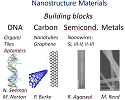 Near and Far-Field Interfaces to DNA-Guided Nanostructures from RF to Light wave: Exploiting the SpectrumP.I. : Peter Burke P.M.: Joe Qiu
Near and Far-Field Interfaces to DNA-Guided Nanostructures from RF to Light wave: Exploiting the SpectrumP.I. : Peter Burke P.M.: Joe Qiu
Blog Archives
2017 MURI Review Meeting Agenda – Near and Far-Field Interfaces to DNA-Guided Nanostructures from RF to Light wave: Exploiting the Spectrum
Annual Review Meeting to be held in Irvine, CA
2016 Annual MURI Review Meeting Logistics Calit2 Room 3008 University of California, Irvine Irvine, CA 92697 January 26, 2016 Directions: Annual review meeting brings the team together with an external, independent advisory board to review progress to date and provide…
Professor Ritesh Agarwal “Voltage-tunable circular photogalvanic effect in silicon nanowires”
Professor Ritesh Agarwal at Upenn published a paper “Voltage-tunable circular photogalvanic effect in silicon nanowires” in Science in 2015.
Professor Peter Burke honored with faculty innovator award
Today Professor Peter Burke was honored with a faculty innovator award. The Innovators Award is presented each year to an individual or team of faculty and/or researchers who best demonstrate innovation in the development of a product and/or technology originating…
Annual Review Meeting to be held in Arlington, VA
2014 Annual MURI Review Meeting Logistics Prince William & Fairfax Room Hyatt Regency Crystal City 2799 Jefferson Davis Highway, Arlington, Virginia, USA 22202 February 10, 2014 Annual review meeting brings the team together with an external, independent advisory board to…
Ritesh Agarwal receives award at SPIE 2014
Ritesh Agarwal receives Nanoengineering Pioneer Award at SPIE 2014
Elliott Brown receives 2013 IEEE Harrel V. Noble Electron Devices Award
Elliott Brown receives 2013 IEEE Harrel V. Noble Electron Devices Award, Dayton Section
Tuning In to Graphene
Communications of the ACM, October 2013 Peter J. Burke of the University of California, Irvine, conducted some of the foundational work on nanoantennas, developing the first RF circuit model for carbon nanotubes. Based on that early work, his team began…
Tiny Sensors, Huge Potential
Imagine a swarm of tiny devices only a few hundred nanometers in size that can detect trace amounts of toxins in a water supply or the very earliest signs of cancer in the blood. Now imagine that these tiny sensors…